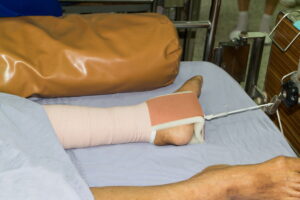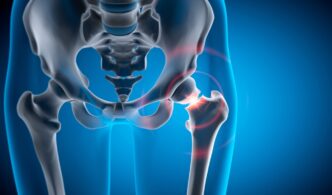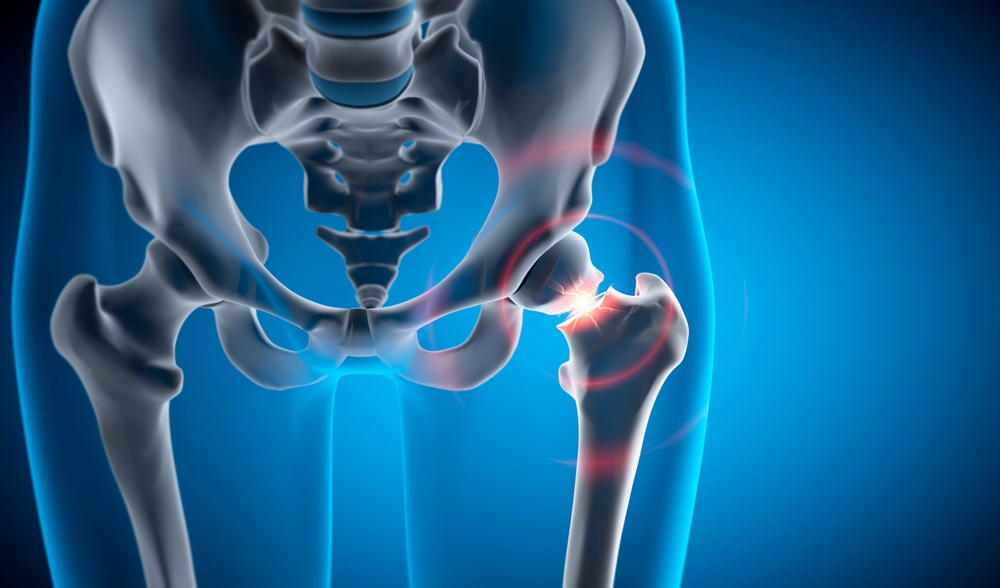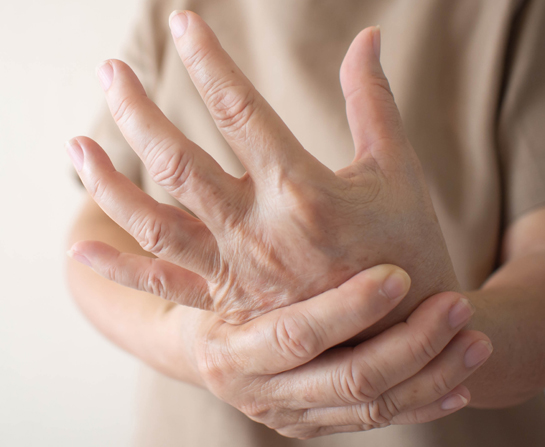Hip fractures are a common type of fragility fracture sustained by older populations. These fractures are often associated with decreased bone mineral density and muscle mass and strength. They also can have serious consequences for the older population, including an increased risk of death.
WORDS DATO’ DR LEE JOON KIONG
 FEATURED EXPERT FEATURED EXPERTDATO’ DR LEE JOON KIONG Consultant Orthopaedic and Arthroplasty Surgeon Beacon Hospital |
SOBERING DATA
- Research data suggests that 1 in 3 adults aged 50 and above dies within 12 months of suffering a hip fracture.
- Older adults have a 5 to 8 times higher risk of dying within the first 3 months of a hip fracture compared to those without a hip fracture. This increased risk of death remains for almost 10 years.
PROBLEMS ASSOCIATED WITH HIP FRACTURES
The exact mechanism by which hip fractures increase the risk of death among the older population can be influenced by numerous factors.
Complications After a Fall
Hip fractures are commonly caused by falls, especially in older adults who may have weaker bones due to conditions like osteoporosis.
The impact of a fall and the resulting fracture are usually quite noticeable and painful. In some cases, individuals may even experience a popping or snapping sound at the time of the fracture.
The impact of a hip fracture on an individual’s overall health and well-being can be substantial, leading to complications such as pneumonia, blood clots in the vein (deep vein thrombosis), pressure sores, and infections, which can contribute to an increased risk of death.
Decreased Mobility and Cognitive Functions
While recovering from a hip fracture, many people experience difficulties in walking, balance, and performing daily activities independently.
Existing Health Conditions Can Complicate Recovery
Older individuals that develop hip fractures often have preexisting health conditions.
These conditions may include osteoporosis, cardiovascular disease, respiratory conditions, and cognitive impairment.
The presence of these health conditions can make it more challenging for individuals to recover from a hip fracture as well as contribute to an increased risk of death.
Surgical Complications
Surgery is usually necessary to treat hip fractures in older people.
However, the surgical procedure has its own share of risks of complications, especially in older individuals with underlying health conditions.
These complications include infections, deep vein thrombosis, and anaesthesia-related issues.
Reduced Quality of Life
The pain, physical limitations, and loss of independence associated with a hip fracture can lead to decreased overall well-being and psychological distress.
HIP FRACTURES ARE TYPICALLY VERY PAINFUL
When a hip fracture occurs, one would experience immediate and intense pain in the hip or groin area.
It will be difficult or even impossible to bear weight on the affected leg.
The pain becomes worse when one tries to move the affected hip or put weight on the fractured hip.
HOWEVER, SOMETIMES A FRACTURE CAN CAUSE MINIMAL PAIN
An asymptomatic hip fracture refers to a hip fracture that does not cause noticeable pain or other symptoms.
Sometimes, individuals with an asymptomatic hip fracture may still be able to walk, and the leg may appear normal.
Hence, it is important to be aware of certain signs that may indicate the need to see a doctor urgently.
Groin or Thigh Pain
Sudden or acute pain in the groin or upper portion of the thigh could be a sign of a hip fracture.
Difficulty in Rotating or Turning the Affected Hip
This is more noticeable when the affected person gets in and out of a vehicle or turning in bed.
Swelling and Bruises Around the Affected Hip
The skin around the fractured hip may swell, redden, or bruise due to blood leaking from the fracture or torn blood vessels nearby.
Referred Pain
Occasionally, a broken hip can cause pain signals to be felt in the knee instead of the hip.
This is known as referred pain.
It occurs because the hips and knees share some nerve pathways.
HIP FRACTURES USUALLY REQUIRE SURGERY. ARE THERE NON-SURGICAL TREATMENT OPTIONS?
A traction can be used to immobilize the fracture site, reduce the risk of further displacement of fracture, promote healing, and reduce swelling or pain.

This can be an option when the bone doesn’t move too far from its original alignment.
PEOPLE WITH A HISTORY OF HIP FRACTURES ARE AT INCREASED RISK OF FUTURE FRACTURES
Here are some strategies that can be helpful to reduce their risk of future fractures.
Adopt a Healthy Lifestyle
This includes maintaining a balanced diet rich in calcium and vitamin D, engaging in regular weight-bearing exercises, and avoiding smoking and excessive alcohol consumption.
Take Fall Prevention Measures
Some strategies include:
- Remove tripping hazards in the home.
- Install grab bars in the bathroom.
- Ensure proper lighting in the home.
- Use assistive devices such as canes or walkers if one has difficulties in walking.
- Exercise regularly to improve balance and strength.
Have a Doctor Review One’s Existing Medications
Some medications may increase the risk of falls or weaken bones, so it is important to consult a doctor and evaluate the potential risks and benefits of each medication one is currently taking.
Keep Under Control Other Existing Health Conditions That Can Increase One’s Risk of Developing Fractures
It is important for individuals with a history of fractures to work closely with their healthcare providers to manage any underlying conditions that may contribute to fracture risk.
This may include treating osteoporosis with bone-strengthening medications and addressing any other medical conditions that increase the risk of fractures.
Go for Regular Bone Mineral Density Screening
Bone mineral density testing, such as dual-energy X-ray absorptiometry (DXA), can help assess bone health and identify individuals at risk of fractures.
Regular monitoring of bone density can guide treatment decisions and help prevent future fractures.
| This article is part of our series on how to keep our bones and joints healthy. |









